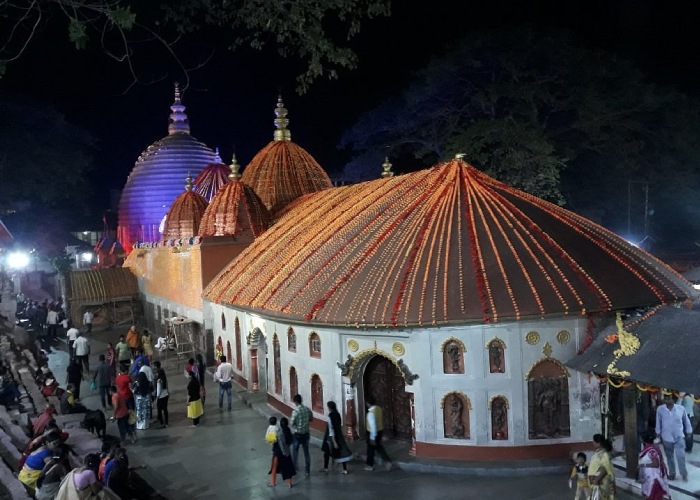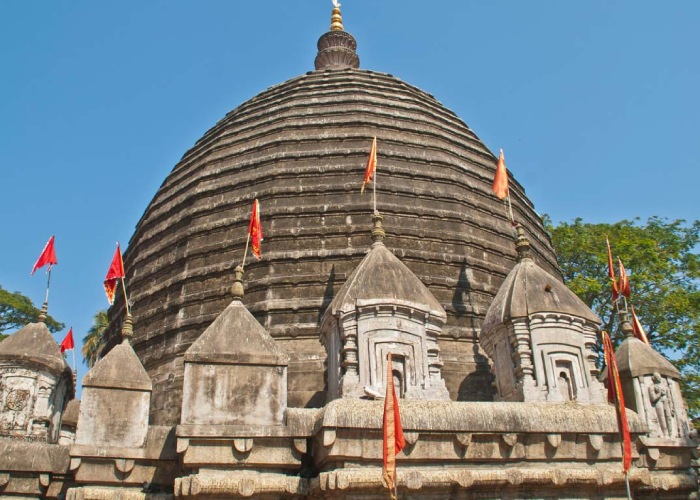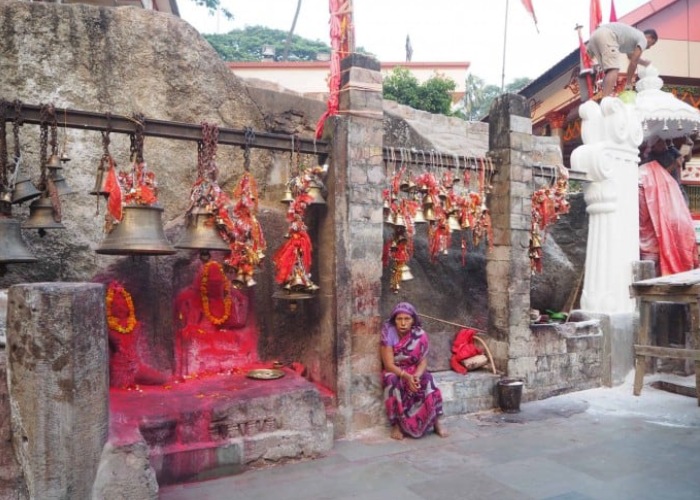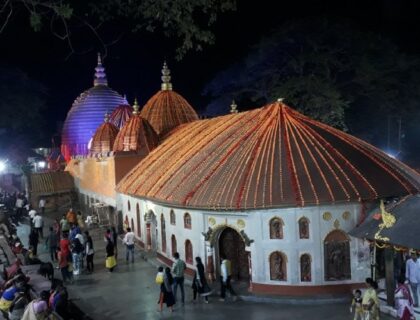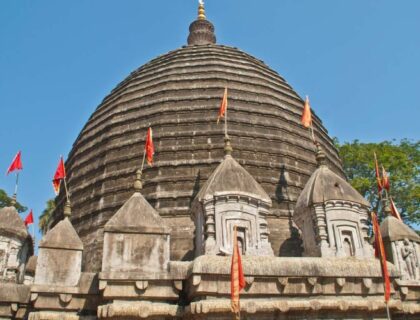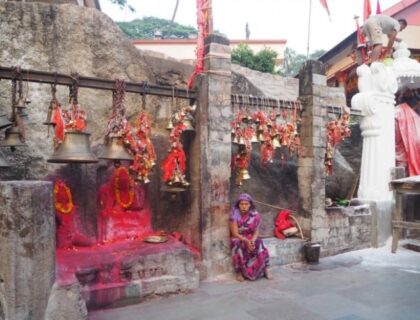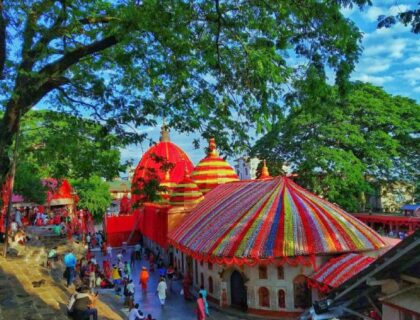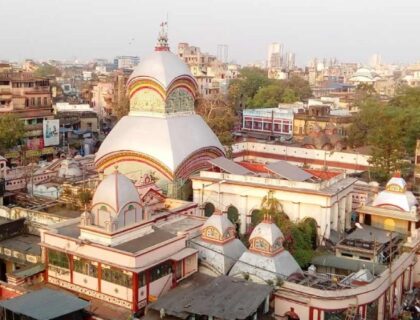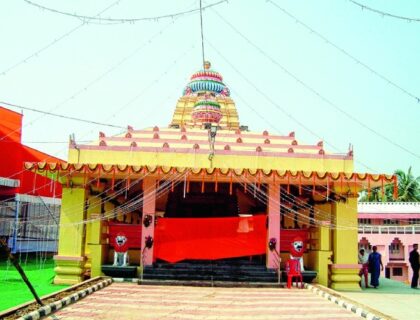Kamakhya Adi Shaktipeeth
Kamakhya Adi Shaktipeeth is one of four Adi Shakti Peethas dedicated to dedicated to Mata Sati’s Yoni Khanda (vagina) located in Guwahati, Assam State, India. The principal deity in this temple is Devi Kamakhya, and it is dedicated to Mata Sati. This temple can be found on top of Nilachal Hill in Guwahati, Assam. Kamakhya Devi is also known as the Bleeding Goddess.
It is also considered a tantra peetha. Apart from the Kamakhya Temple, the other three important Adi Shakti Peethas are Tara Tarini (Sthana Khanda) near Brahmapur, Bimala (Pada Khanda) within the Jagannath Temple in Puri, and Dakshina Kalika (Mukha Khanda) in Kolkata.
The story behind Kamakhya Adi Shaktipeeth
The goddess of Dakshayani, Sati, Parvati, or Durga—Hinduism’s most important woman and most powerful deity—is referred to as Shakti. Durga Devi, Mahakali, and Gowri are the three main manifestations of Shakti, the power goddess. She is Adi Shakti’s avatar.
Sati was the Prajapati Daksha’s daughter, and she married Lord Shiva despite Her father’s wishes. Prajapati Daksha once put together a massive yagya, but he didn’t call his daughter and son-in-law. Sati was very saddened by Her father’s actions. When she got there, her father ignored the Sati and insulted her. She could not bear insult to his husband (Lord Shiva) and she jumped into the fire of Yagya and committed suicide. She passed away, but her body didn’t burn. Lord Shiva had taken His Virabhadra Rupa out of rage. He cut off Daksha’s head, but in the end, He forgave him by bringing him back to life.
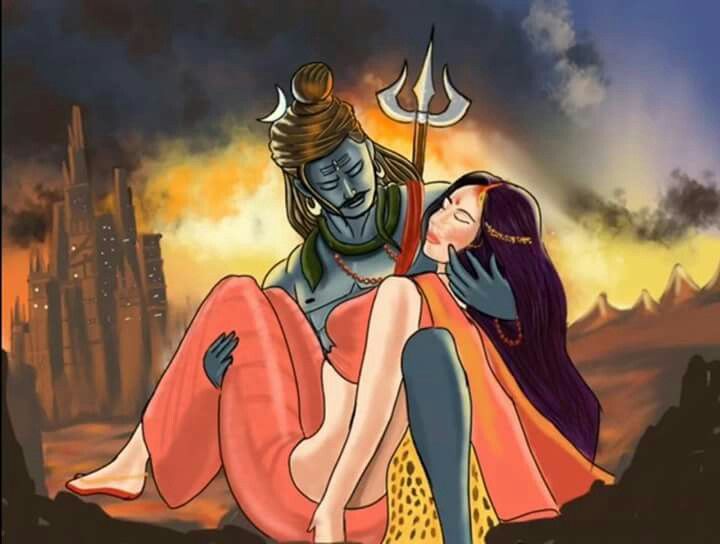
Lord Shiva, devastated took Sati’s body and wandered the universe. Finally, Lord Vishnu used His Chakra to break the Sati’s body into pieces. Each body part transformed into Shakti Pitha. The temple had emerged where the body part had fallen to the ground. To safeguard the Shakti Pitha, Lord Shiva created 51 Bhairava for each one.
The Kamakhya Adi Shaktipeeth is associated with numerous Stories. According to the “Kalika Purana,” the Kamakhya temple was one of the locations where Goddess Sati secretly retreated to satisfy her love for Lord Shiva. It is also believed that the “Yoni” of Goddess Sati fell into the temple when Lord Vishnu cut her body.
Because the exact location of the uterus’s fall was unknown at the time, Kamadev, the God of Love, set out to find it to lift a curse placed on him. Kamadev discovered it on the Nilachal hills and built a temple to the Goddess. Because Kamadev later reclaimed his body in this location, it was named “Kamrupa,” Kamadev worshipped the presiding deity “Kamakhya.”
History of Kamakhya Adi Shaktipeeth
The current temple structure was constructed in 1565 by Chilarai of the Koch Dynasty. There are three significant chambers in the sanctuary. A small idol of Goddess Kamakhya was later added to the temple in the square middle chamber. The middle chamber leads to a cave-like sanctum sanctorum. The large, rectangular western chamber is not used for worship by the general public. Within walls, there are cut engravings of Nara Narayana and other related engravings.
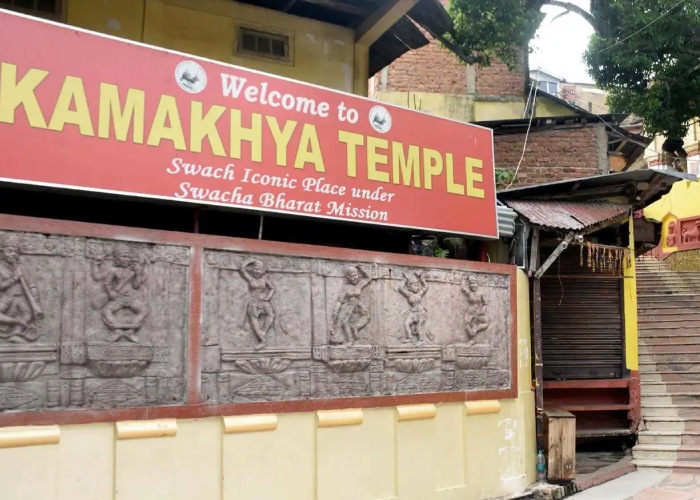
A shikhara-like beehive can be found in the Kamakhya temple. Chamundeswari, Ganes, and other dancing figures are sculpted onto the temple’s walls. The temple was renovated and rebuilt numerous times throughout its development. The temple was also renovated by Ahom King Jayadhvaj Singha and subsequent Ahom kings in 1658. It is also known that King Rudra Singha and his son Siba Singha took care of the temple when they were alive.
The architecture of Kamakhya Adi Shaktipeeth
The Kamakhya temple complex contains additional temples dedicated to various goddesses. Sitala Temple, Lalita Kanta Temple, Jaya Durga Temple, Vana Durga Temple, Rajarajesvari Temple, Smasanakali Temple, Kali Temple of Abhayananda Dharmashala, and Sankhesvari Temple are all included in this group. There are five sanctuaries of Ruler Shiva in the Kamakhya complex. They include Kamesvara (Umananda), Siddhesvara, Amratokesvara (Heruka), Aghpra, and Kotilinga (Tatpurusa), all of whom are manifestations of Lord Shiva.

Three temples dedicated to Lord Visnu are also part of the complex. They are the Kedara (Kamalesvara), which is near the main temple’s northern side; the Gadadhara, which is in the Kamakhya temple’s northwest; and Pandunath, which is in the eastern foothills of Nilachal and is also known as Pandu.
Facts about Kamakhya Adi Shaktipeeth
- Kamakhya temple is Guwahati‘s most popular attraction and one of India’s most prominent temples.
- Dedicated to Mother Goddess Kamakhya, the Kamakhya temple is one of the oldest of the 51 Shaktipeeths.
- The temple complex houses temples dedicated to ten mahavidyas, of which the Kamakhya temple is the main one.
- It is one of the temples where the sacrificial form of worship is followed till date.
- Devotees often come with goats as offerings to the Goddess. The annual festival called Ambubachi Mela attracts a lot of tantric worshipers and is a grand event.
- The Shakti Peetha is surrounded by 10 small temples devoted to Mata Kali, in her different avatars namely, Dhumavati, Bagola, Tara, Matangi, Bharavi, Kamala, Chinnamasta, Bhuvaneshwari and Tripura Sundari.
Famous Festivals In Kamakhya Adi Shaktipeeth
Millions of people visit this temple every year to celebrate all of the festivals that are held here. Some major festivals held here are
- Durga Puja. (Winter) – Devotees celebrate Navaratri at this temple in the month of Ashwin (Sep-Oct) and celebrate the triumph of the Goddess Durga over the buffalo demon (Mahishasura).
- Navaratri. (Summer) – They celebrate other Navaratri in the fortnight of the Chaitra (March-April). Every nine days they worship Navadurga (nine Durgas).
- Ambubachi Mela – Ambubachi Mela is one of the biggest congregations in eastern India. It is the most important festival of the Kamakhya temple and is celebrated in June every year.
How To reach Kamakhya Adi Shaktipeeth
The Kamakhya temple is easily accessible as it is situated at the centre of Guwahati city.
By Air: Lokapriya Gopinath Bordoloi International Airport. The temple is about 20 km from the airport.
By Rail: Guwahati railway station. The temple is about 6 km from the Guwahati railway station
By Road: Regular buses, taxis and cabs run from the city to the Kamakhya Adi Shaktipeeth.
Also Read – Kalighat Kali Adi Shaktipeeth
Support Us
If our content helps you even 1% in gaining information about the temple, please support us by contributing any amount, our UPI ID is - q417999792@ybl Or pay using QR CODE >>> Click Now
Location
Facilities
- Drinking Water
- Pooja Item Shops
- Prasad Shops
- Restaurants Nearby
- Resting Room
Frequently Asked Questions
- Snana, or bathing of the Pithasthana, occurs at 5:30 in the morning.
- Nitya puja occurs at 6:00 in the morning.
- The temple door opens to devotees at 8:00 in the morning.
- The temple door closes for offerings to the goddess at 1:00 in the afternoon.
- The temple door reopens to devotees at 2:30 in the afternoon.
- Aarati of Goddess after which temple door closes for the night at 5:30 PM

